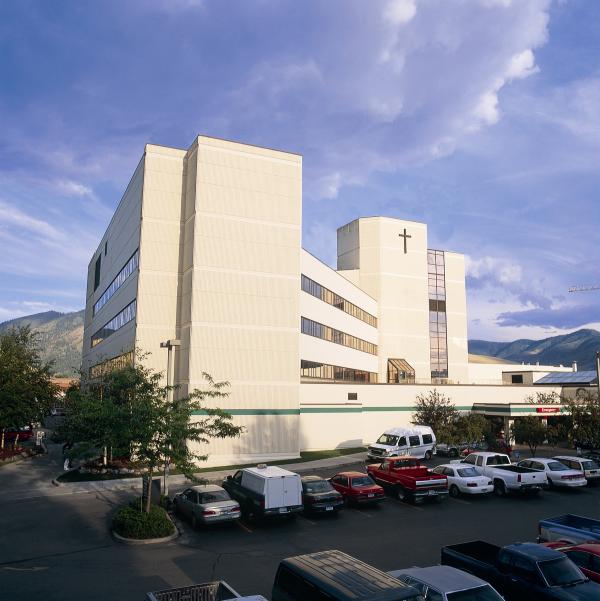Our neighborhood is in the front left foreground. Across the mid left and center of the screen are wheat fields. The red teardrop symbol in back right of the satellite view identifies Bozeman Deaconess, including the hospital plus 22 of its 23 associated clinics. I can swivel my head and see the hospital out our back living room window as I type this post. Helicopters frequently fly overhead ferrying in seriously injured patients to the emergency room, or taxiing critically ill heart disease patients, or other patients who can be better served, to specialized facilities east of us in Billings.
Not surprisingly, ours is a neighborhood heavily populated with doctors, nurses and other health care professionals. Our children go to schools with their children. There is abundant interaction and person-to-person contact.
Bozeman Deaconess hospital is where we go for emergencies. It being a hundred or more miles or one or more mountain passes to everything else that you might call a city, there is really no other good option. Three out of our six household members see doctors in that complex. As the others age out of pediatric medicine we all will come to rely on the complex for our ongoing health care needs.
So when I heard a news report that one of the four hospital facilities nationwide specially equipped to treat people diagnosed with infectious diseases was in Montana, my ears perked up. I checked to see where, and readily admit, I was relieved to learn the designated facility was in Missoula, 210 miles up the road.
Up along the Bitterroot Valley the local NBC TV station reports they are saying trust us.
MISSOULA, Mont. - St. Patrick Hospital officials answered questions Thursday from the Missoula Health Board about the hospital's Care and Isolation Unit, or CIU.
It's one of four units like it in the country that is specially equipped to treat people diagnosed with infectious diseases, and it's received a lot of attention in light of the Ebola outbreak.
St. Patrick Hospital's Joyce Dombrouski told the board that no one is currently being treated for Ebola at the hospital's CIU, and there aren't any plans for that to change.
To understand how it could, she says it's important to understand why St. Patrick's CIU was built in the first place. She says came at the request of Hamilton's Rocky Mountain Laboratories.
Doctors and technicians there work on vaccines and cures for infectious diseases, and the lab needed a place to treat anyone at the lab who became accidentally infected.
The lab also puts St. Patrick doctors and nurses through infectious disease treatment training drills twice a year.
 |
| Providence St. Patrick's Hospital, Missoula, MT. |
All of that makes St. Patrick more than capable of treating a patient diagnosed with Ebola outside the city or state -- someone from Texas, for example -- but it would only come at the request of federal health officials, and St. Patrick would have the final say.
If St. Patrick were to get the call, the Missoula Health Department would have oversight and would perform safety inspections prior to any patient transfer. That's according to Missoula City-County Health Department spokesperson Cindy Hotchkiss.
"It's a rule that's been in place for a really long time," said Hotchkiss. "It basically states that we want to ensure that there's no way that this infectious disease could be spread through the process of transferring a patient."At the end of the video (available at the link immediately above), the TV station says that the hospital has repeatedly denied its request for an interview. In total nationwide, the four infectious disease units can house 8 to 13 patients.
The infectious disease crowd are all playing a relativity game. You are safe because there is something that is not currently happening that would make you less safe.
The challenge with understanding and reacting to Ebola is that right now no one really knows how infectious it is. The statements made by "experts" and "scientists" concerning the low probability of transmission are based on pre-2014 experience in Africa, when there were a few dozen or a few hundred cases per year. But this year there are already 10,000 documented cases, with some credibly claiming that numbers are dramatically under reported. The World Health Organization predicts new cases could reach 10,000 a week before the end of the year.
Why has the rate of infections increased so dramatically? You don't hear the experts raising the question in public venues, much less trying to answer it. This story has a long way to roll and the crisis has a long way to come before it gets resolved one way or another.

No comments:
Post a Comment